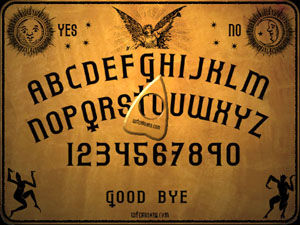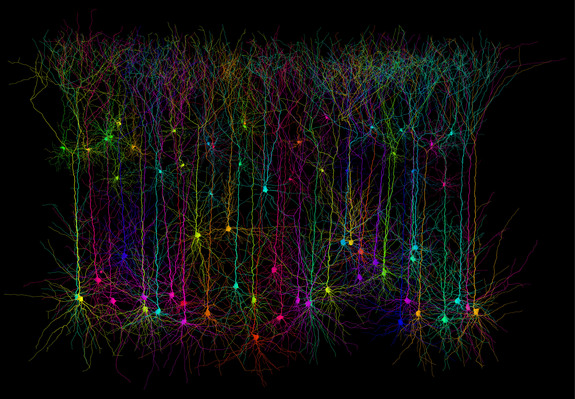
© worlditc.org
In February, 1891, the first few advertisements started appearing in papers:
Ouija, the Wonderful Talking Board, boomed a Pittsburgh toy and novelty shop, describing a magical device that answered questions "about the past, present and future with marvelous accuracy" and promised "never-failing amusement and recreation for all the classes," a link "between the known and unknown, the material and immaterial." Another advertisement in a New York newspaper declared it "interesting and mysterious" and testified, "as Proven at Patent Office before it was allowed. Price, $1.50."
This mysterious talking board was basically what's sold in board game aisles today: A flat board with the letters of the alphabet arrayed in two semi-circles above the numbers 0 through 9; the words "yes" and "no" in the uppermost corners, "goodbye" at the bottom; accompanied by a "planchette," a teardrop-shaped device, usually with a small window in the body, used to maneuver about the board. The idea was that two or more people would sit around the board, place their finger tips on the planchette, pose a question, and watch, dumbfounded, as the planchette moved from letter to letter, spelling out the answers seemingly of its own accord. The biggest difference is in the materials; the board is now usually cardboard, rather than wood, and the planchette is plastic.
Though truth in advertising is hard to come by, especially in products from the 19th century, the Ouija board was "interesting and mysterious"; it actually had been "proven" to work at the Patent Office before its patent was allowed to proceed; and today, even psychologists believe that it may offer a link between the known and the unknown.The real history of the Ouija board is just about as mysterious as how the "game" works. Ouija historian
Robert Murch has been researching the
story of the board since 1992; when he started his research, he says, no one really knew anything about its origins, which struck him as odd: "For such an iconic thing that strikes both fear and wonder in American culture, how can no one know where it came from?"


Comment: For more information on the "ordinary psychological causes" see
Moral Endo-skeletons and Exo-skeletons: A Perspective on America's Cultural Divide and Current Crisis
Political Ponerology: A Science on The Nature of Evil adjusted for Political Purposes